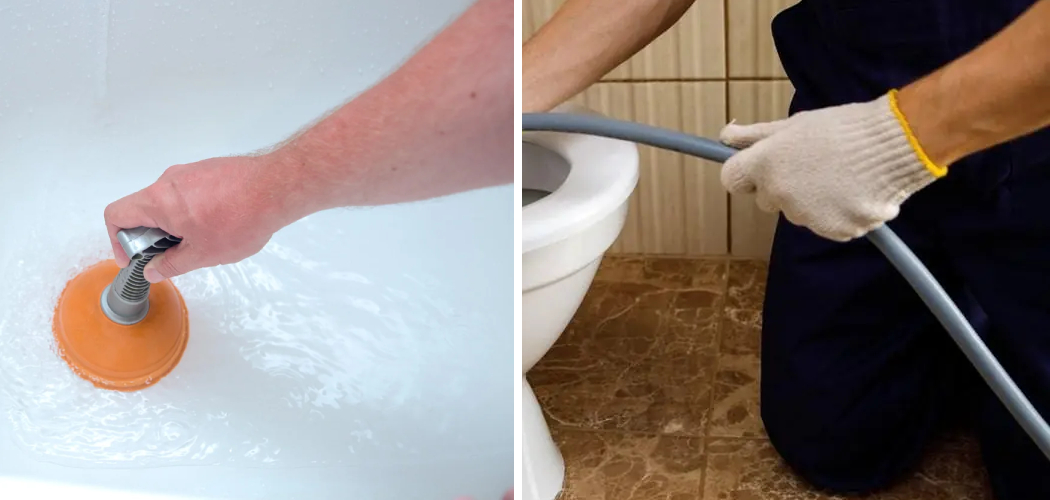Clogged toilets and bathtubs are common household problems that can be frustrating to deal with. The toilet or bathtub drain can become clogged for various reasons, such as excessive use of toilet paper, flushing down non-flushable items, hair buildup, or even tree roots invading the pipes. Whatever the cause, a clogged toilet or bathtub can disrupt your daily routine and cause inconvenience. It is important to address the issue immediately to prevent further damage and avoid expensive repairs.
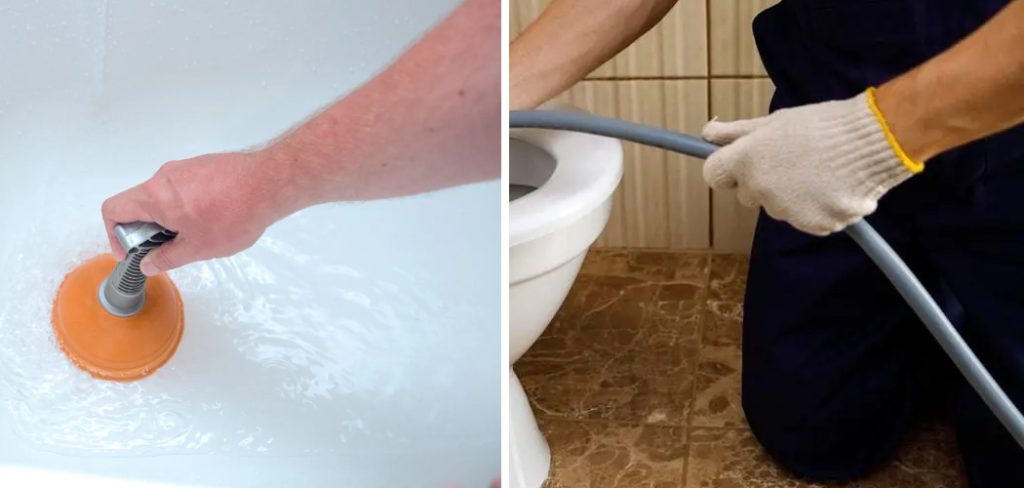
In this guide, we will discuss some simple yet effective methods on how to fix clogged toilet and bathtub. These methods can be easily done with basic household tools and do not require professional plumbing services. However, if the clog is severe or persists, seeking help from a licensed plumber is recommended.
Understanding the Causes of Clogged Drains
Before we discuss the methods for fixing a clogged toilet and bathtub, it is important to understand the common causes of clogged drains. This knowledge can help prevent future clogs and give insight into the best method for your situation.
As mentioned earlier, one of the main causes of a clogged drain is excessive toilet paper use. While toilet paper is designed to dissolve easily in water, using too much of it at once can cause a blockage. Another common culprit is flushing down non-flushable items such as wipes, cotton swabs, feminine hygiene products, and dental floss.
Hair buildup is also a major contributor to clogged bathtub drains. As we shower or bathe, hair gets stuck in the drain and accumulates over time, eventually blocking the water from draining properly. Additionally, tree roots can invade underground pipes, causing clogs requiring professional assistance.
Other factors contributing to clogged drains include old and corroded pipes, improper installation of plumbing fixtures, and a lack of regular maintenance.
11 Best Ways on How to Fix Clogged Toilet and Bathtub
1. Plunger Method:
The plunger method is one of the most effective ways to fix a clogged toilet. To use this method, you will need a toilet plunger, which can be found at most hardware stores. Place the plunger over the drain, push down, and pull up rapidly. This creates suction that can dislodge the clog and allow it to flow down the drain.
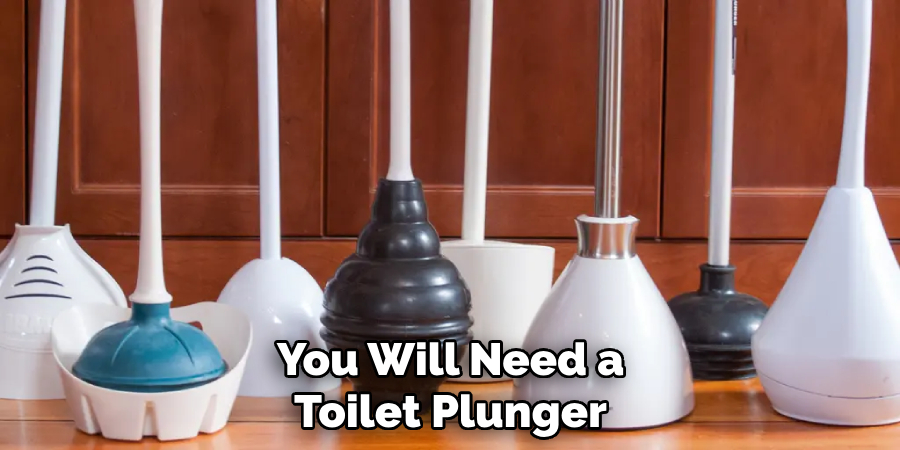
To use a plunger on a bathtub, you must cover the overflow with duct tape or a rag before plunging. This ensures that the air pressure created by plunging is directed downwards towards the clog.
2. Baking Soda and Vinegar:
This natural method effectively removes minor clogs caused by hair or grease buildup. Pour half a cup of baking soda down the drain, followed by half a cup of vinegar. Let it sit for about 30 minutes before pouring hot water down the drain to clear any remaining residue. This method can also be used for regular drain maintenance. If the clog persists, repeat the process or try other methods.
3. Boiling Water:
Another simple and natural method for unclogging toilets and bathtubs is using boiling water. Boil a pot of water and pour it down the drain in two to three stages, allowing some time between each stage to let the hot water work its way through the pipes.
This method works best for minor clogs and can also be used as a preventive measure. If the clog persists, avoid using this method, as it can crack old or worn-out pipes.
4. Plumbing Snake/Auger:
A plumbing snake, also known as an auger, is a tool used to clear clogs in toilets and bathtubs. It has a long, flexible wire with a coiled tip that can reach deep into the drain to break down or pull out the clog.
Insert the snake into the drain and twist it while pushing it further down until you feel resistance. Continue turning and pushing until you feel the clog break or become dislodged.
5. Dish Soap:
This method is best for unclogging toilets, as dish soap can help lubricate and loosen the clog. Pour a quarter cup of dish soap into the bowl, followed by a pot of hot water (not boiling). Let it sit for about 30 minutes before flushing. This method may require multiple attempts to clear the clog completely. If the clog remains, try other methods or seek professional help.
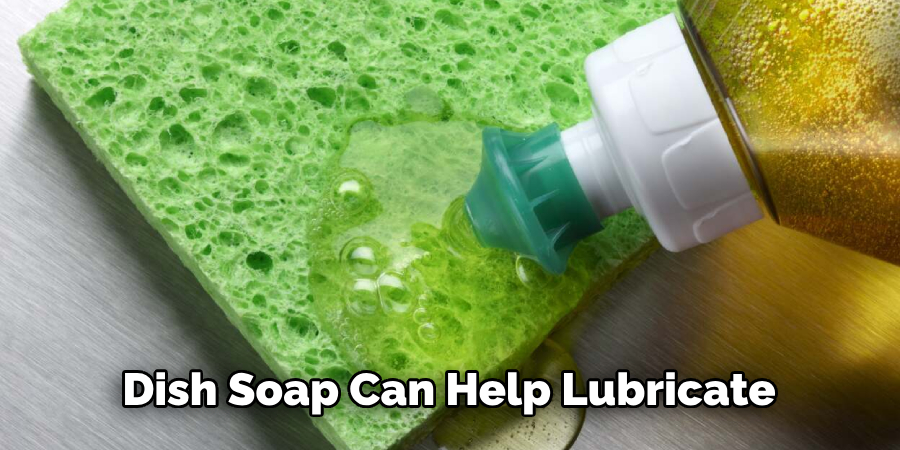
6. Wet and Dry Vacuum:
If you have a powerful wet and dry vacuum, you can use it to remove stubborn clogs in toilets or bathtubs. Set the vacuum to liquid suction mode and place it ovr the drain, ensuring a tight seal.
Turn on the vacuum and let it run for a few seconds. This method creates a suction that can dislodge and remove the clog. If the clog remains, use a plumbing snake or seek professional help.
7. Caustic Soda:
Caustic soda, or sodium hydroxide, is a strong chemical that can dissolve hair and grease buildup in drains. However, it can be hazardous to handle and should be cautiously used.
To use this method, wear protective gear, including gloves and goggles, and follow the instructions provided on the packaging. Due to its corrosive nature, this method is not recommended for regular drain maintenance.
8. Enzyme Cleaners:
Enzyme cleaners are safe and eco-friendly options for unclogging drains. These cleaners contain natural enzymes that break down organic materials, effectively removing hair and grease buildup.
Pour the recommended amount of cleaner down the drain and let it sit for several hours or overnight before flushing with hot water. This method may require multiple attempts to clear the clog completely.
9. Salt and Baking Soda:
This method is similar to using baking soda and vinegar, but instead, you will use salt and baking soda together. Mix half a cup of salt and half a cup of baking soda, then pour the mixture down the drain.
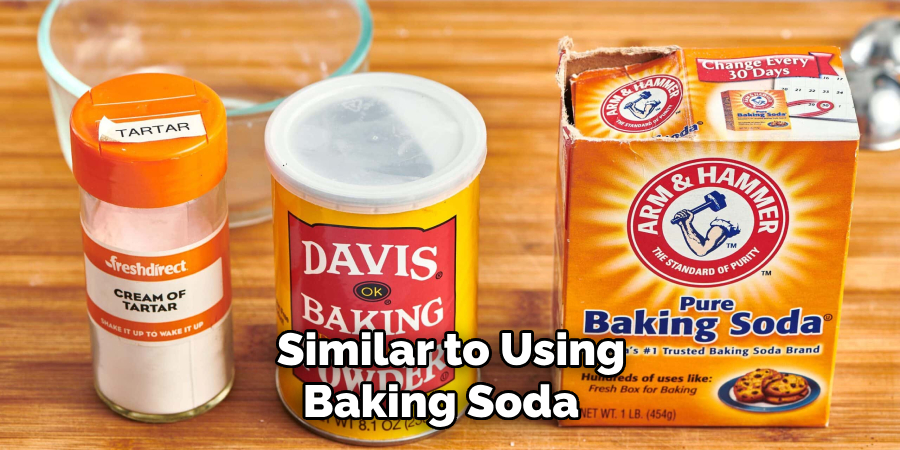
Let it sit for about 15 minutes before pouring boiling water down the drain to clear any remaining residue. Repeat this method if necessary. This method is not recommended for toilets, as salt may cause corrosion.
10. Hydrogen Peroxide:
Hydrogen peroxide is another natural option for unclogging drains. It works similarly to caustic soda by breaking down organic materials but is safer to handle. Mix equal parts of hydrogen peroxide and hot water and pour it down the drain. Let it sit for about 30 minutes before flushing with hot water. This method may require multiple attempts to clear the clog completely.
11. Regular Maintenance:
The best way to prevent clogged toilets and bathtubs is by regularly maintaining your drains. This includes using drain covers, cleaning the drains with natural methods, and avoiding flushing or draining items that are not meant to be disposed of through pipes.
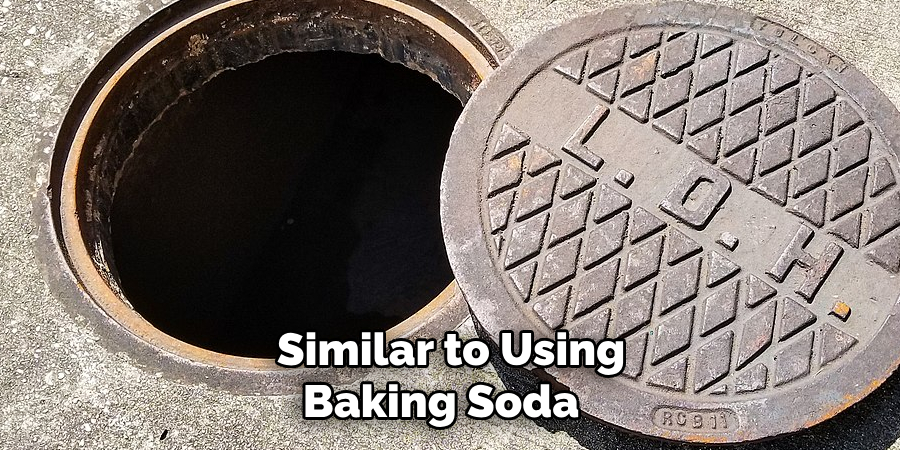
Additionally, have a plumber inspect your plumbing system every few years to check for any potential issues and perform necessary maintenance. Regular maintenance can save you from the hassle of dealing with clogs in the future.
These methods can help you fix clogged toilets and bathtubs effectively and safely. However, if the clog persists or reoccurs frequently, it is best to seek professional help to avoid causing further damage to your plumbing system.
Always be cautious when handling chemicals and tools, and regularly maintain your drains to prevent future clogs. Stay vigilant in keeping your plumbing system in good condition. Happy plunging!
Additional Tips and Tricks to Fix Clogged Toilet and Bathtub
1. If the plunger method does not work, use a plumbing snake or auger to remove the clog. This tool is designed specifically for unclogging toilets and bathtubs. Insert the snake into the drain and turn it clockwise as you push it in. Once you feel resistance, continue turning and pushing until the clog is dislodged.
2. For tougher clogs, try using a mixture of baking soda and vinegar. Pour half a cup of baking soda into the drain, followed by half a cup of white vinegar. Let it sit for about 30 minutes, then pour hot water down the drain to flush out the clog.
3. If you suspect that the clog is caused by hair, use a hair catcher or drain strainer to prevent future clogs. These can be easily placed over the drain and catch any hair before it goes into the pipes.
4. Regularly clean your drains to prevent buildup and clogs. You can use a mixture of baking soda and hot water to flush out any debris and keep your drains clear.
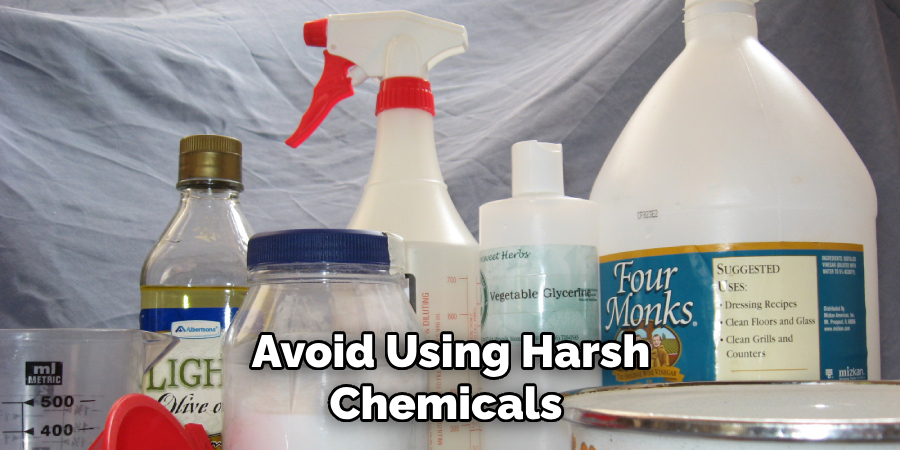
5. Avoid using harsh chemicals or drain cleaners, as they can cause damage to your pipes and are harmful to the environment. Stick to natural methods like baking soda and vinegar, or consider investing in a drain snake for tougher clogs.
6. If the clog persists and you cannot fix it yourself, do not hesitate to call a professional plumber. They have the tools and expertise to properly unclog your toilet or bathtub without causing any further damage.
7. Be mindful of what you flush down the toilet or drain to prevent clogs. Never flush items like wipes, cotton balls, or feminine hygiene products down the toilet, as they can easily cause clogs. Similarly, avoid pouring grease or food scraps down the kitchen sink to prevent buildup in the pipes.
8. Finally, if you live in an older home with outdated plumbing systems, consider having them professionally inspected and updated. This can help prevent frequent clogs and costly repairs in the future.
By following these additional tips and tricks, you can effectively unclog your toilet and bathtub and prevent future clogs. Always prioritize safety and use caution when handling plumbing tools or chemicals. If in doubt, it is best to seek the help of a professional plumber for a proper fix. So next time you encounter a clogged toilet or bathtub, don’t panic – with these tips, you can easily tackle the problem and keep your plumbing running smoothly. Happy unclogging!
Things You Should Consider to Fix Clogged Toilet and Bathtub
1. When you have a clogged toilet and bathtub, the first thing to consider is the severity of the blockage. This will determine the best course of action for fixing the issue.
2. If the clog is minor, it can usually be solved with a plunger. Make sure to use a plunger specifically designed for toilets, as they have an extra flap that creates more suction. You can use a regular plunger or a specialized drain plunger for bathtubs.
3. If the clog is more severe and a plunger does not work, you may need to use a plumbing snake. This tool is inserted into the drain and twisted to break up and remove the blockage.
4. Chemical drain cleaners are another option for clearing clogs in toilets and bathtubs. However, they can be harsh and harmful to pipes, so use them sparingly.
5. For more stubborn clogs, you may need to remove the toilet or bathtub trap. This curved section of pipe under the fixture collects debris and can become clogged. You will need tools such as pliers and a wrench to remove and clean the trap.
6. Sometimes, tree roots or other obstructions in the main sewer line cause clogs. If so, you must call a professional plumber to address the issue.
7. Regular maintenance can help prevent clogs from occurring. Clean hair and other debris from drains regularly, and avoid flushing items that could clog the toilet.
8. If you have a recurring issue with clogged toilets and bathtubs, consider upgrading your plumbing fixtures. Newer models are designed to prevent clogs and can save you from frequent headaches.
9. It is always important to use caution when attempting to fix clogged toilets and bathtubs. If you are unsure or uncomfortable with the process, it is best to call a professional plumber for assistance.
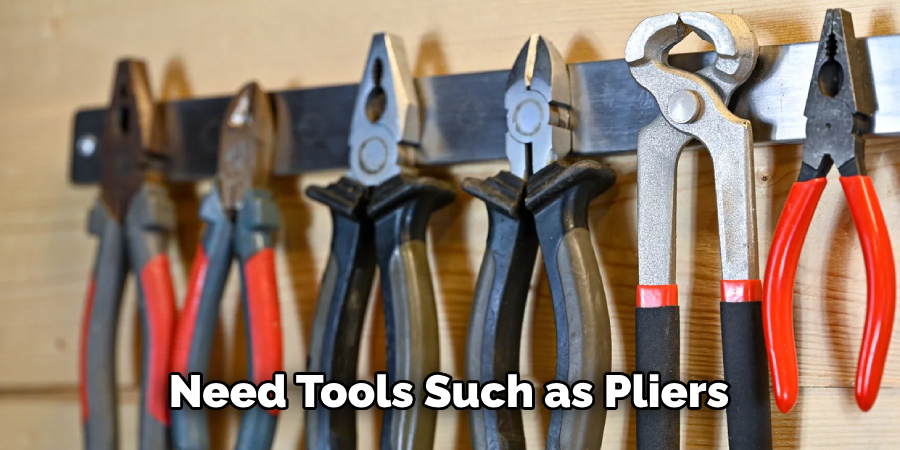
Following these considerations can help you effectively fix clogged toilets and bathtubs. Remember to always prioritize safety and consult a professional if needed. With proper maintenance, your plumbing fixtures can remain clear and functioning properly. Therefore, it is important to regularly clean and maintain them to avoid any unnecessary clogs in the future.
Maintenance Tips for Clogged Toilet and Bathtub
1. Regular Cleaning:
One of the most effective ways to prevent clogs in your toilet and bathtub is to clean them regularly. This means scrubbing the inside of your toilet bowl and removing any hair or debris from your bathtub drain at least once a week.
This will help prevent build-up that can lead to clogs. If you have hard water, it is also important to use a descaling agent on your toilet and bathtub regularly to prevent mineral build-up.
2. Watch What You Flush:
Toilets are designed to only flush human waste and toilet paper. Anything else can cause clogs in the pipes. This includes items like feminine hygiene products, diapers, wipes, and even excessive amounts of toilet paper.
Make sure to dispose of these items in the trash instead of flushing them down the toilet. If you have young children, educating them about what can and cannot be flushed down the toilet is important.
3. Use a Plunger:
If your toilet is clogged, a plunger can often dislodge the blockage. Make sure to use a flange plunger specifically designed for toilets.
Place the rubber end over the hole in the bottom of the toilet bowl and begin plunging. This will create pressure that can help loosen and remove the clog. If you have a bathtub clog, use a standard plunger to cover the drain and plunge up and down to dislodge any debris.
4. Use Natural Remedies:
Natural remedies can help unclog your toilet and bathtub if you prefer to avoid using harsh chemicals.
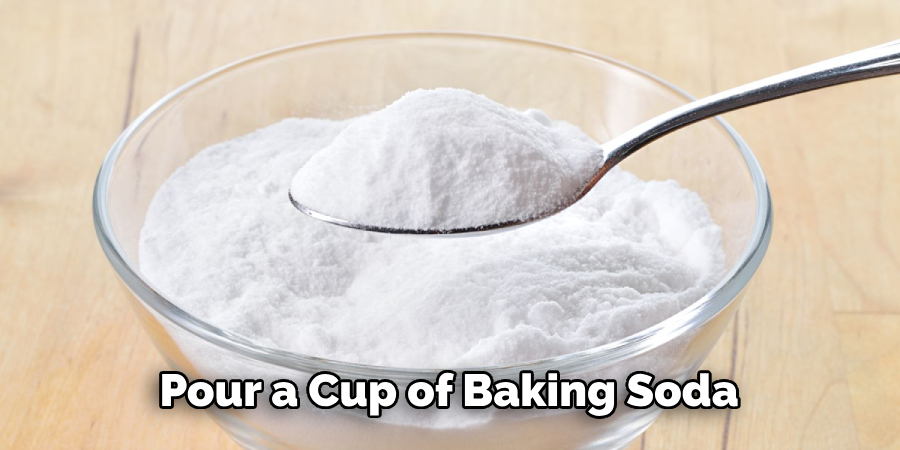
For a clogged toilet, pour a cup of baking soda and a cup of vinegar into the bowl and let it sit for at least 30 minutes before flushing it with hot water. For a clogged bathtub, mix equal parts of baking soda and salt together and pour it down the drain, followed by boiling water.
5. Invest in a Drain Snake:
It may be worth investing in a drain snake if you frequently have clogs in your toilet or bathtub.
This tool is designed to reach deep into the pipes and remove any blockages. Ensure you follow the instructions carefully when using a drain snake, as improper use can damage your plumbing system. This tool can also be used as a preventative measure to remove any build-up in the pipes before they become clogged.
6. Regular Maintenance:
In addition to regular cleaning, it is important to schedule regular maintenance for your plumbing system. This can help identify any potential issues before they become major problems. A professional plumber can also thoroughly clean your pipes and drains to prevent clogs from occurring in the future.
Following these maintenance tips can help prevent clogs in your toilet and bathtub, saving you from the inconvenience and expense of dealing with a blocked drain.
Remember to also be mindful of what you flush down the toilet and to regularly clean your bathroom fixtures to maintain a healthy and functional plumbing system. By taking these simple steps, you can avoid the frustration of dealing with clogs and keep your bathroom running smoothly.
Conclusion
Knowing how to fix clogged toilet and bathtub drains is crucial in order to avoid any inconvenience. By following the steps outlined in this guide, you can easily clear most clogs on your own without having to call a plumber. However, if these methods do not work or if you encounter more serious plumbing problems, it is best to seek professional help.

